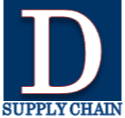One of the most useful tools in any business is Key Performance Indicators (acronym KPI). To find the effectiveness of any process, some criteria needs to be identified to check how successful the process is. In this article we are going to have a brief look on what is key performance indicators, its benefits, how to setup and how to present it.
The importance of key
performance indicators comes from the ability to show business leaders
where are they compared to where they want to be. KPI can help to,
·
Assessment of the current position and
how far it is from the desired one.
·
Cutting through existing oceans of data
and providing simple and vital piece of information to support decision making.
·
Accurately measuring current performance
and continuous learning from it to improve future results.
·
Ensuring compliance with internal and
external regulations and requests.
Key performance indicators
setup is a simple process, but we need to consider it first as a SMART
indicator which means to be a specific, easy to be measured, easy to be
achieved, real, and definite a time period. The smart KPI might be
either an average of a quantitative data, i.e. average order value per month, and
average production quantity per month, or a rate of qualitative data based on a
selected criteria, i.e. rate of on-time deliveries, and rate of rejected purchase
orders. The process itself starts with defining what is needed to be measured
and find realistic, timely, and logical ways to measure it. They result needs
to be compared to a preset standard which might be based on old performance or
a near reality random value if KPI culture is adopted for the first
time.
For more illustration,
if we need to setup a KPI for measuring shipping capacity in a
distribution center, the KPI used here for example is “number of trucks
loaded per day”. This indicator is blind since there is several kinds of trucks
which will have different time lapse to load. So we need to make sub KPIs
related to the main one for every truck type to reflect the actual
performance
The presentation of the key
performance indicators need to be easy to understand. The hint behind that
is to choose the appropriate chart type to display, i.e. pie charts for
percentages, bar charts for comparison, and line charts for trends. Also, it
can just a number screen to display a single value which changes dynamically
when new data is added.














